Abstract
Patients with recessive X-linked ichthyosis, one of the inherited types of excessive stratum corneum cohesion, have deficient steroid sulfatase in fibroblasts grown from their dermis. Because of the expense and long period required to grow such cells, we have assayed this enzyme in peripheral blood leukocytes and found it to be undetectable in those from patients with this type of ichthyosis, but normal in those from patients with other hereditary or acquired types of ichthyosis. In addition, steroid sulfatase activity is less in leukocytes from women who are carriers of this disease than normal women, and this assay can be used to detect such carriers. Despite previous studies demonstrating that the gene for this enzyme escapes the inactivation of other x-chromosome genes, normal women have leukocyte steroid sulfatase activity only 1.3 times that of normal men, suggesting that some gene dosage compensation occurs. Normal human epidermis, the tissue most affected clinically, also expresses steroid sulfatase activity. The epidermal enzyme is similar in its subcellular localization, its molecular size, and kinetically to that of placenta, leukocytes, and fibroblasts.
Full text
PDF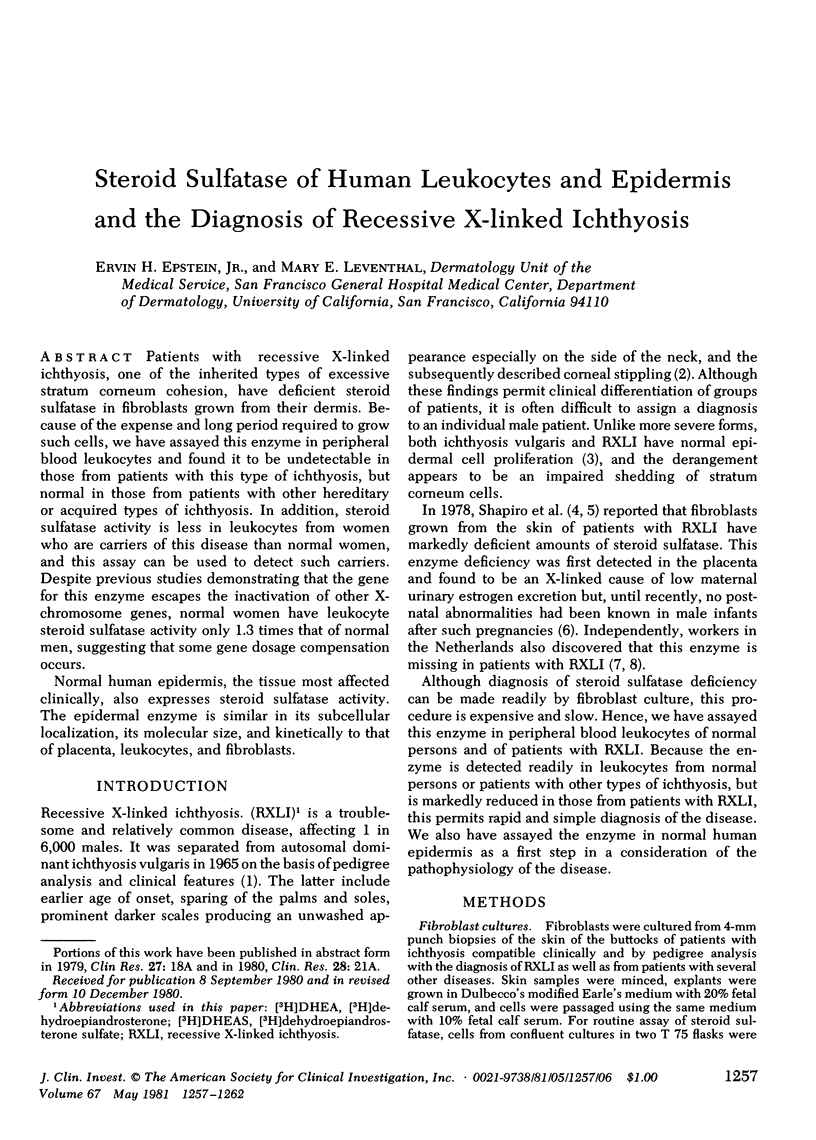
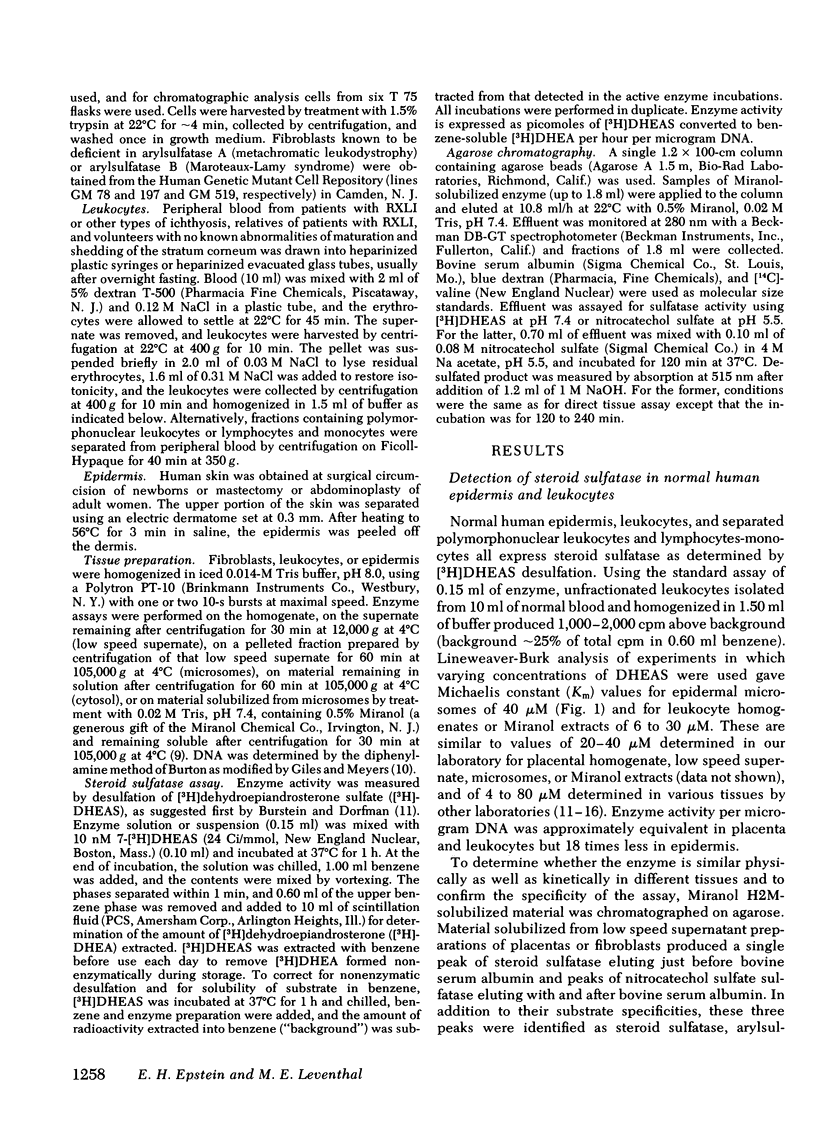
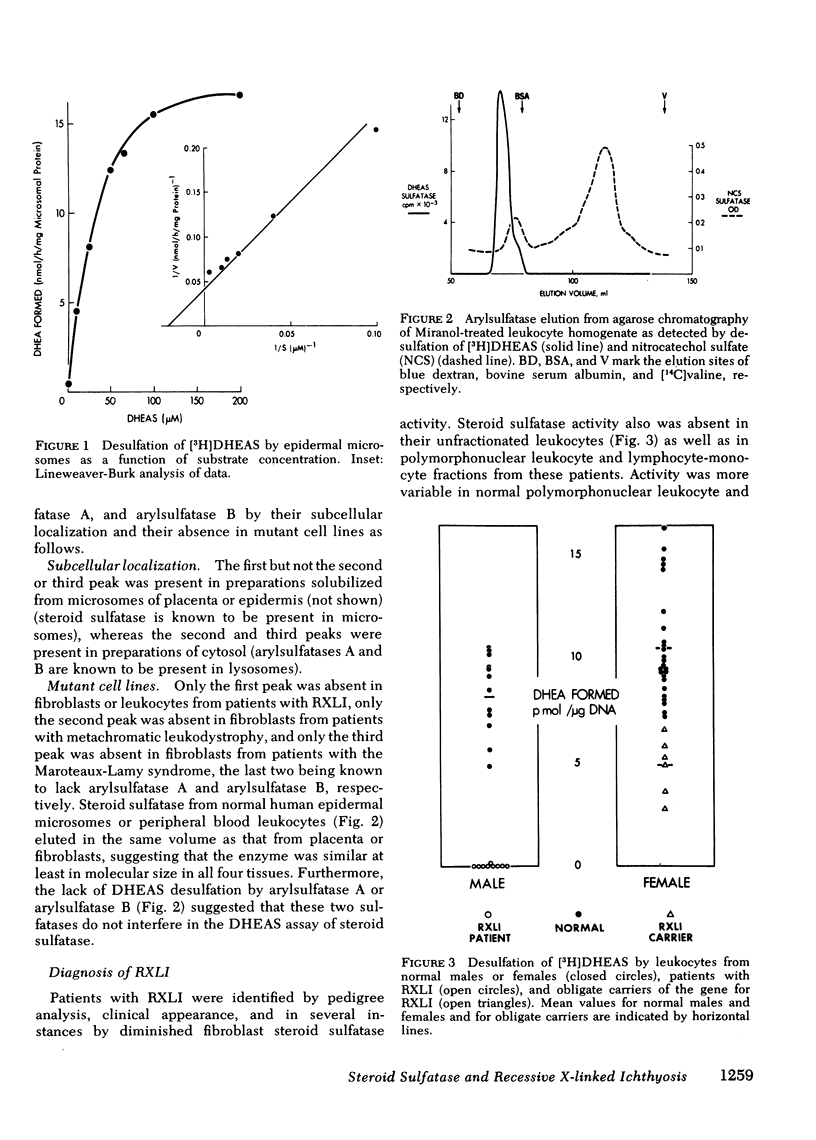
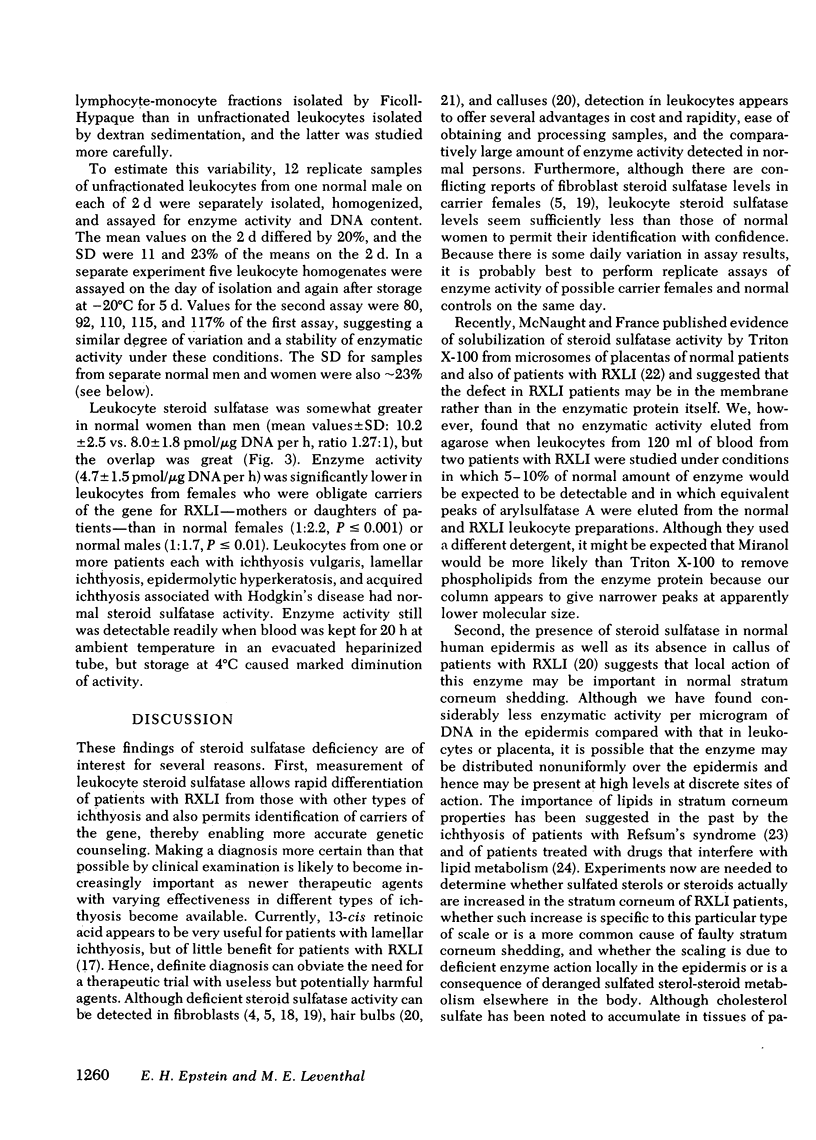
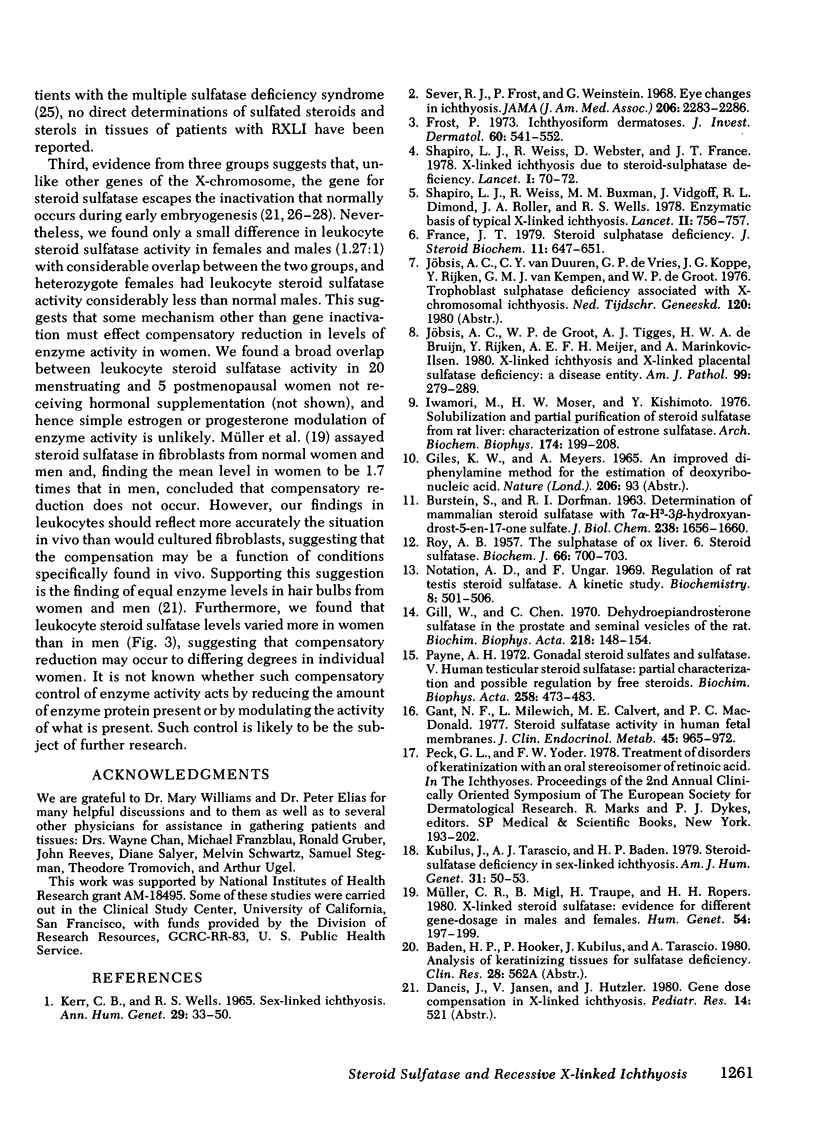
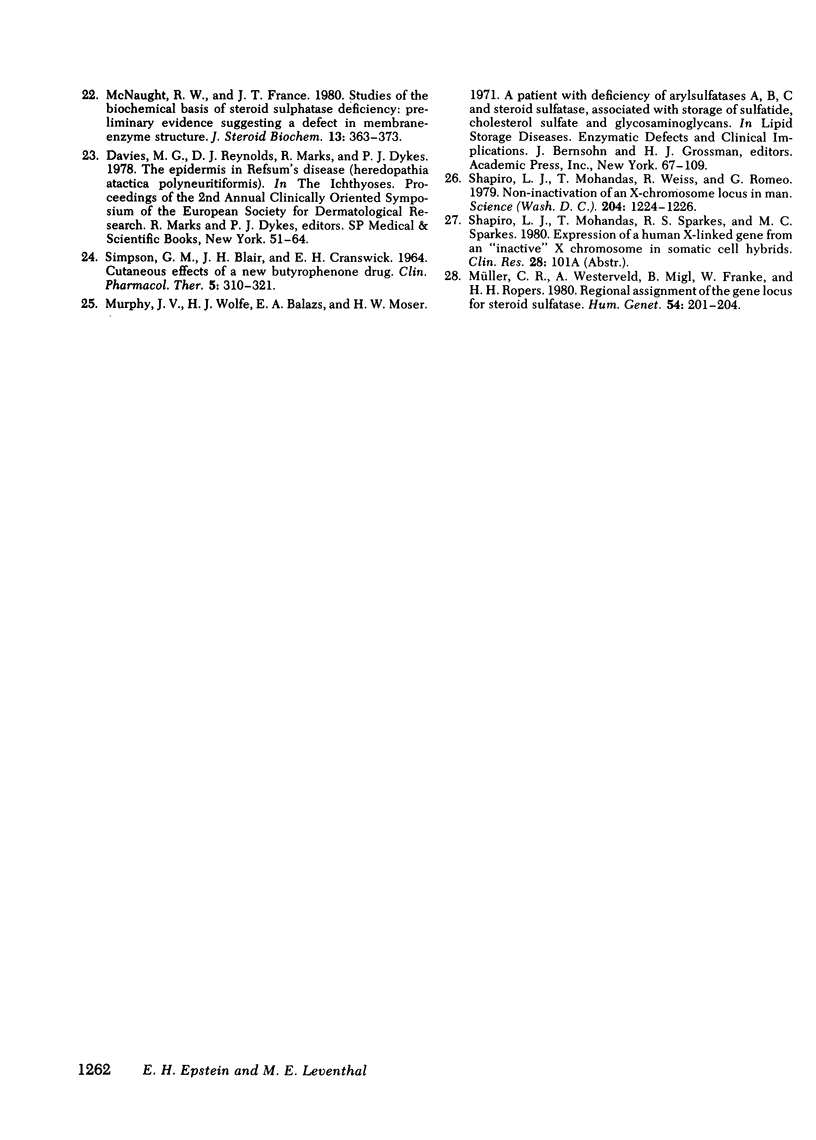
Selected References
These references are in PubMed. This may not be the complete list of references from this article.
- BURSTEIN S., DORFMAN R. I. Determination of mammalian steroid sulfatase with 7 alpha-H3-3beta-hydroxyandrost-5-en-17-one sulfate. J Biol Chem. 1963 May;238:1656–1660. [PubMed] [Google Scholar]
- France J. T. Steroid sulphatase deficiency. J Steroid Biochem. 1979 Jul;11(1B):647–651. doi: 10.1016/0022-4731(79)90094-3. [DOI] [PubMed] [Google Scholar]
- Frost P. Ichthyosiform dermatoses. J Invest Dermatol. 1973 Jun;60(6):541–552. doi: 10.1111/1523-1747.ep12703626. [DOI] [PubMed] [Google Scholar]
- Gant N. F., Milewich L., Calvert M. E., MacDonald P. C. Steroid sulfatase activity in human fetal membranes. J Clin Endocrinol Metab. 1977 Nov;45(5):965–972. doi: 10.1210/jcem-45-5-965. [DOI] [PubMed] [Google Scholar]
- Gill W., Chen C. Dehydroepiandrosterone sulfatase in the prostate and seminal vesicles of the rat. Biochim Biophys Acta. 1970 Oct 6;218(1):148–154. doi: 10.1016/0005-2760(70)90102-5. [DOI] [PubMed] [Google Scholar]
- Iwamori M., Moser H. W., Kishimoto Y. Solubilization and partial purification of steroid sulfatase from rat liver: characterization of estrone sulfatase. Arch Biochem Biophys. 1976 May;174(1):199–208. doi: 10.1016/0003-9861(76)90339-8. [DOI] [PubMed] [Google Scholar]
- Jöbsis A. C., De Groot W. P., Tigges A. J., De Bruijn H. W., Rijken Y., Meijer A. E., Marinkovic-Ilsen A. X-linked ichthyosis and X-linked placental sulfatase deficiency: a disease entity. Histochemical observations. Am J Pathol. 1980 May;99(2):279–289. [PMC free article] [PubMed] [Google Scholar]
- Kubilus J., Tarascio A. J., Baden H. P. Steroid-sulfatase deficiency in sex-linked ichthyosis. Am J Hum Genet. 1979 Jan;31(1):50–53. [PMC free article] [PubMed] [Google Scholar]
- McNaught R. W., France J. T. Studies of the biochemical basis of steroid sulphatase deficiency: preliminary evidence suggesting a defect in membrane-enzyme structure. J Steroid Biochem. 1980 Mar;13(3):363–373. doi: 10.1016/0022-4731(80)90017-5. [DOI] [PubMed] [Google Scholar]
- Müller C. R., Migl B., Traupe H., Ropers H. H. X-linked steroid sulfatase: evidence for different gene-dosage in males and females. Hum Genet. 1980;54(2):197–199. doi: 10.1007/BF00278971. [DOI] [PubMed] [Google Scholar]
- Müller C. R., Westerveld A., Migl B., Franke W., Ropers H. H. Regional assignment of the gene locus for steroid sulfatase. Hum Genet. 1980;54(2):201–204. doi: 10.1007/BF00278972. [DOI] [PubMed] [Google Scholar]
- Notation A. D., Ungar F. Regulation of rat testis steroid sulfatase. A kinetic study. Biochemistry. 1969 Feb;8(2):501–506. doi: 10.1021/bi00830a007. [DOI] [PubMed] [Google Scholar]
- Payne A. H. Gonadal steroid sulfates and sulfatase. V. Human testicular steroid sulfatase: partial characterization and possible regulation by free steroids. Biochim Biophys Acta. 1972 Feb 28;258(2):473–483. doi: 10.1016/0005-2744(72)90239-2. [DOI] [PubMed] [Google Scholar]
- ROY A. B. The sulphatase of ox liver. VI. Steroid sulphatase. Biochem J. 1957 Aug;66(4):700–703. doi: 10.1042/bj0660700. [DOI] [PMC free article] [PubMed] [Google Scholar]
- SIMPSON G. M., BLAIR J. H., CRANSWICK E. H. CUTANEOUS EFFECTS OF A NEW BUTYROPHENONE DRUG. Clin Pharmacol Ther. 1964 May-Jun;5:310–321. doi: 10.1002/cpt196453310. [DOI] [PubMed] [Google Scholar]
- Sever R. J., Frost P., Weinstein G. Eye changes in ichthyosis. JAMA. 1968 Dec 2;206(10):2283–2286. [PubMed] [Google Scholar]
- Shapiro L. J., Mohandas T., Weiss R., Romeo G. Non-inactivation of an x-chromosome locus in man. Science. 1979 Jun 15;204(4398):1224–1226. doi: 10.1126/science.156396. [DOI] [PubMed] [Google Scholar]
- Shapiro L. J., Weiss R., Buxman M. M., Vidgoff J., Dimond R. L., Roller J. A., Wells R. S. Enzymatic basis of typical X-linked icthyosis. Lancet. 1978 Oct 7;2(8093):756–757. doi: 10.1016/s0140-6736(78)92646-6. [DOI] [PubMed] [Google Scholar]
- Webster D., France J. T., Shapiro L. J., Weiss R. X-linked ichthyosis due to steroid-sulphatase deficiency. Lancet. 1978 Jan 14;1(8055):70–72. doi: 10.1016/s0140-6736(78)90005-3. [DOI] [PubMed] [Google Scholar]


